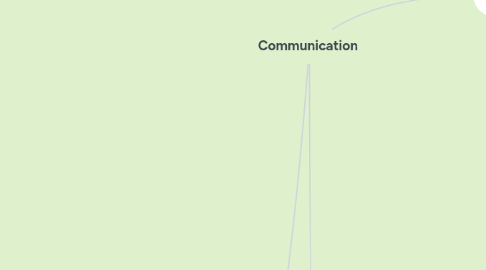
1. Poor Communication skills
1.1. Listening Apprehension( Brownell 2006) -anxiety about listening
1.2. Barriers to Active Listening
1.2.1. Silence as Agreement
1.2.2. External presures
1.2.3. Lack of know-how
1.2.4. Individual Make-up ( personal background
1.2.5. Time and Place
1.2.6. Emotions
1.2.7. Cultural Differences
2. Receptive Communication Skills
2.1. Listening(neglected skill, most important because most used)
2.1.1. Passive Listening-unconscious and habitual, listens to only some parts and assumes the rest
2.1.2. Affective Process(motivation to listen to message) Cognitive Process(understanding the message) Behavioral Process( verbal or non-verbal response)
2.1.3. Process of Listening (Wolvin & Coakley, 1995) -Receiving ( aural stimuli) -Attending ( selecting) -Assigning
2.1.4. Process of Listening ( Rost) -Decoding -Comprehension -Interpretation
2.1.5. Purpose of Listening ( Wolvin & Coakley, 1995) Discriminative Listening-identify sound Aesthetic Listening-for fun Efferent Listening-for information Critical Listening-evaluate information
2.1.5.1. Discriminative Listening Blending-combine sounds to make words Segmenting-chunk sounds and make meaning savoring word play-related words noticing verbal and nonverbal cues
2.1.5.2. Efferent Listening(looking for the big ideas) Organizing-put order Recognizing big ideas-identify Questioning-ask questions Summarizing-create gist
2.1.5.3. Aesthetic Listening( for funsies) -Predicting -Visualizing -Connecting -Summarizing
2.1.5.3.1. Listening Style People-oriented listeners( focus on emotions of person speaking to)
2.1.5.3.2. Active Listening Strategy:Understanding Identify the main point Ask questions Paraphrase Empathize Perspective Taking Sympathetic Responsiveness
2.1.6. Active Listening strategy - Attending -get physically ready to listen -resist mental distractions -hear the person out
2.1.7. Listening Skills
2.1.7.1. Processing sound (senses)
2.1.7.2. Processing meaning ( mental image)
2.1.8. Active Listening Strategy by Hoppe -Pay Attention -Hold Judgment -Reflect -Clarify -Summarize -Share
2.2. Viewing ( active interaction between reader and text)
2.3. Reading (understanding visuals)
3. Propaganda Devices
3.1. Glitterling Generality
3.2. Testimonial
3.3. Card Stacking
3.4. Bandwagon
3.5. Rewards
3.6. Name Calling
4. Nature
4.1. Processes
4.1.1. One-way(message is encoded by sender and decoded by receiver)
4.1.2. Two-way(similar to one-way but with feedback from receiver)
4.1.3. Messages > Encoding > Decoding > Feedback

